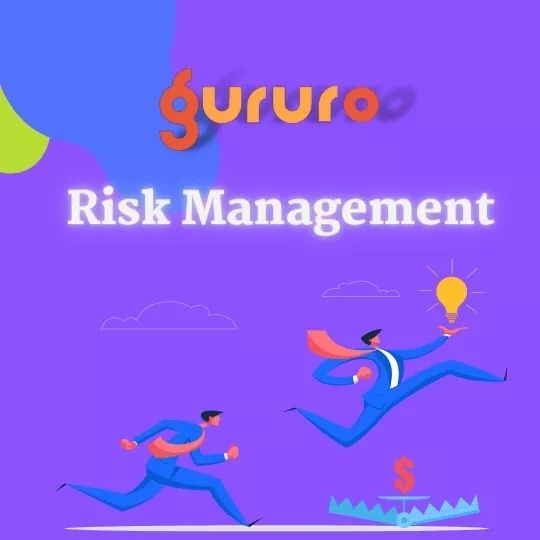Definition of Risk management: Risk management is the process of identifying, assessing, and managing potential risks that could impact an organization’s operations, financial performance, and reputation.
The Importance Of Risk Management In Project Success
Risk management is an essential aspect of project management, and it plays a critical role in the success of any project. Risk management aims to identify, assess, and prioritize potential risks that could impact the project’s objectives and then develop strategies to mitigate or avoid those risks.
One of the primary benefits of risk management is that it helps project managers anticipate and prepare for potential problems before they occur. By identifying and assessing risks early on, project managers can take proactive measures to mitigate or avoid them, which can help to prevent delays, cost overruns, and other negative impacts on the project.
Risk management also helps project managers to make better-informed decisions. By considering the potential risks and their impacts, project managers can weigh the pros and cons of different choices and choose the course of action most likely to lead to project success.
Another benefit of risk management is that it helps to ensure that the project stays on track and meets its objectives. By identifying and managing risks, project managers can help to minimize disruptions and keep the project moving forward.
Overall, risk management is an essential part of project management and a critical factor in the success of any project. By identifying, assessing, and managing potential risks, project managers can help to ensure that their projects stay on track and meet their objectives while minimizing negative impacts and maximizing the chances of success.
Ready to Master Risk Management?
Take your risk management skills to the next level with our Practical Risk Management: A Live Case Study Approach course
The Risk Management Process Steps in risk management with examples
The steps in risk management involve a systematic process to identify, assess, and manage potential risks that could impact an organization’s operations, financial performance, and reputation. Here are the main steps in risk management and examples of how they can be applied:
- Identify potential risks: The first step in risk management is to identify potential risks that could impact the organization. This step involves identifying potential threats, hazards, and vulnerabilities that could cause harm to the organization. For example, an organization may identify a risk of a natural disaster such as a hurricane, which could damage their facilities and disrupt operations.
- Assess the likelihood and potential impact of identified risks: Once potential risks have been identified, the next step is to assess the likelihood and potential impact of those risks. This step involves evaluating the likelihood of a risk occurring and the potential impact it could have on the organization if it does occur. For example, an organization may assess the likelihood of a natural disaster as low, but the potential impact as high.
- Develop strategies to mitigate or avoid risks: Based on the assessment of the likelihood and potential impact of identified risks, the next step is to develop strategies to mitigate or avoid those risks. This step involves identifying and implementing actions that can be taken to reduce the likelihood of a risk occurring or to minimize the potential impact if it does occur. For example, an organization may develop a disaster recovery plan, which would include measures to protect their facilities and restore operations after a natural disaster.
- Implement and monitor risk management strategies: Once strategies have been developed, the next step is to implement them and monitor their effectiveness. This step involves putting risk management plans into action and monitoring the effectiveness of the strategies to ensure that they are effectively mitigating or avoiding risks. For example, an organization may implement a disaster recovery plan, which would include measures to protect their facilities and restore operations after a natural disaster, and continuously monitor the plan to ensure that it’s effective.
- Review and update risk management strategies: The risk management process is not a one-time event, it should be ongoing. The organization should periodically review and update their risk management strategies as needed. This step involves reviewing the effectiveness of existing risk management strategies and updating them as needed to ensure that they continue to be effective in mitigating or avoiding risks. For example, an organization may review its disaster recovery plan after a natural disaster and update it to include any lessons learned.
- Communicate and report: Risk management also involves communicating and reporting risk information to stakeholders and senior management. This step involves providing information about identified risks, the strategies that have been developed to mitigate or avoid those risks, and the effectiveness of those strategies. For example, an organization may communicate and report to their stakeholders about the natural disaster risk and the implemented measures to mitigate it.
In summary, the steps in risk management involve a systematic process to identify, assess, and manage potential risks that could impact an organization’s operations, financial performance, and reputation. The process is ongoing, and each step is important to ensure that the organization is prepared to manage risks effectively.
Strategies for Managing Risks
Risk management strategies are methods used to identify, assess, and manage potential risks that could impact an organization’s operations, financial performance, and reputation. There are several risk management strategies that organizations can use, including:
- Risk avoidance: This strategy involves identifying and avoiding activities or situations that could lead to potential risks.
- Risk reduction: This strategy involves identifying potential risks and taking steps to reduce the likelihood of those risks occurring or to minimize the potential impact if they do occur.
- Risk transfer: This strategy involves transferring the potential impact of a risk to another party, such as by purchasing insurance.
- Risk acceptance: This strategy involves accepting the potential impact of a risk and taking no further action to mitigate or avoid it.
- Risk sharing: This strategy involves sharing the potential impact of a risk with another party, such as through a joint venture or partnership.
- Risk mitigation: This strategy involves taking steps to reduce the likelihood of a risk occurring or to minimize the potential impact if it does occur. Mitigation strategies may include implementing controls, such as security measures, or developing a continuity plan.
- Contingency planning: This strategy involves identifying potential risks and developing plans to respond to those risks if they occur.
- Risk monitoring: This strategy involves continuously monitoring identified risks and their likelihood and impact, as well as the effectiveness of risk management strategies.
In summary, risk management strategies are methods used to identify, assess, and manage potential risks that could impact an organization’s operations, financial performance, and reputation.
Different organizations may use different risk management strategies depending on their specific needs and objectives, and the most effective risk management plan will typically involve a combination of these strategies.
Is risk management a good career
Risk management can be a rewarding career for individuals interested in helping organizations identify, assess, and manage potential risks.
A risk management career can offer various job opportunities, including positions in finance, insurance, healthcare, manufacturing, and government. In addition, risk management professionals may work in-house for a specific organization or as consultants.
Risk management roles can include responsibilities such as:
- Identifying potential risks that could impact an organization’s operations or financial performance
- Assessing the likelihood and potential impact of identified risks
- Develop strategies to mitigate or avoid risks
- Communicating risk information to stakeholders and senior management
- Monitoring and reporting on the effectiveness of risk management strategies
- Keeping up-to-date with industry developments and regulations
The job market for risk management professionals is expected to grow in the coming years. According to the Bureau of Labor Statistics, employment of risk management professionals is projected to grow 7% from 2019 to 2029, faster than the average for all occupations.
Additionally, the field of risk management is constantly evolving as new technologies and regulations come into play, so a career in risk management can be challenging, stimulating, and always in demand.
Is risk management important?
Risk management is essential because it helps organizations identify, assess, and manage potential risks that could impact their operations, financial performance, and reputation. With effective risk management, organizations may be prepared for and aware of potential risks, which can lead to unexpected negative impacts on the organization.
Here are some specific reasons why risk management is essential:
- Protects the organization’s assets: Risk management helps organizations identify potential risks that could cause financial loss and develop strategies to mitigate or avoid those risks. This can help to protect the organization’s assets and minimize financial losses.
- Helps organizations make better-informed decisions: By identifying and assessing potential risks, organizations can make more informed decisions about mitigating or avoiding those risks. This helps ensure that the organization’s resources are used in the most effective way possible.
- Improves operational efficiency: Effective risk management can help organizations identify and address potential operational issues before they occur, which can help to improve efficiency and reduce disruptions.
- Enhances reputation: Risk management can also help organizations protect their reputation by identifying potential risks that could damage their reputation and developing strategies to mitigate or avoid those risks.
- Compliance: Organizations are also obligated to comply with various regulations and standards related to risk management, such as ISO 31000, COSO, and Basel III. Failing to comply with these regulations can lead to financial penalties and reputational damage.
- Help organizations achieve their objectives: By identifying, assessing, and managing potential risks, organizations can help to ensure that their projects, programs, and goals stay on track and are accomplished.
When risk assessment should be carried out
Risk assessment should be carried out at different stages of a project or an organization’s operations, depending on the specific needs and objectives of the project or organization. Here are some examples of when risk assessment should be carried out:
- During the planning phase of a project: Risk assessment should be carried out at the beginning of the project planning phase to identify potential risks that could impact the project’s objectives and to develop strategies to mitigate or avoid those risks.
- During the execution phase of a project: Risk assessment should be carried out periodically during the execution phase of the project to identify new risks that have arisen and to assess the effectiveness of existing risk management strategies.
- When a new project or initiative is proposed: Risk assessment should be carried out when a new project or initiative is proposed to identify potential risks and to determine whether the project or initiative is viable.
- When a new regulation or standard is introduced: Risk assessment should be carried out when a new regulation or standard is introduced to ensure compliance and identify any potential risks that may arise from the new regulation or standard.
- When a significant change occurs within the organization: Risk assessment should be carried out when a significant change occurs within the organization, such as a merger or acquisition, to identify potential risks and to develop strategies to mitigate or avoid those risks.
- When an incident or event occurs: Risk assessment should be carried out when an incident or event occurs, such as a natural disaster, to identify potential risks and to develop strategies to mitigate or avoid those risks.
In summary, risk assessment should be carried out at different stages of a project or an organization’s operations, depending on the specific needs and objectives of the project or organization. It is an ongoing process that should be carried out periodically, when a new project or initiative is proposed, when a new regulation or standard is introduced, when a significant change occurs within the organization, and when an incident or event occurs.
risk management with jira
Jira is a project management tool that can be used to manage risks in an organization. Jira can be used to identify potential risks, assess the likelihood and potential impact of those risks, and develop and implement strategies to mitigate or avoid those risks. Here are some ways Jira can be used for risk management:
- Identify potential risks: Jira can be used to create and manage a risk register, which is a document that lists all of the potential risks that could impact a project or organization. The risk register can be used to track the status of each risk, including whether it has been identified, assessed, or mitigated.
- Assess the likelihood and potential impact of identified risks: Jira can be used to create custom fields in the risk register to track the likelihood and potential impact of each risk. This can be used to prioritize risks and to develop risk management strategies.
- Develop and implement strategies to mitigate or avoid risks: Jira can be used to create and assign tasks related to risk management, such as developing risk mitigation plans or implementing risk avoidance strategies. Jira can also be used to track the progress of these tasks and to ensure that they are completed on time.
- Communicate and report: Jira can be used to share risk information with stakeholders and senior management, such as by creating a risk dashboard that displays the status of identified risks, the strategies that have been developed to mitigate or avoid those risks, and the effectiveness of those strategies.
- Monitor and review: Review and update the Jira risk register as needed.
which risk management certification is best
There are several risk management certifications available, and the best one for you will depend on your specific needs and career goals. Here are a few popular and reputable risk management certifications to consider:
- Certified Risk Management Professional (CRMP) is offered by the Institute of Risk Management (IRM) and it is a globally recognized certification that provides a comprehensive understanding of risk management, it covers the full range of risk management techniques, concepts, and practices.
- Professional Risk Manager (PRM) is offered by the Professional Risk Managers’ International Association (PRMIA) and it is a comprehensive certification that covers the full spectrum of risk management, including market, credit, operational and integrated risk.
- Certified in the Governance of Enterprise IT (CGEIT) is offered by the ISACA, this certification covers the full range of governance-related topics, including IT governance, risk management, compliance, and assurance.
- Certified in the Risk Management Assurance (CRMA) is also offered by ISACA, it provides an understanding of the internal audit’s role in risk management.
- ISO 31000 Risk Manager is offered by the International Standards Organization (ISO) and it is a globally recognized certification that provides an understanding of the ISO 31000 standard for risk management.
- Certified in the Control Self-Assessment (CCSA) is offered by ISACA, it focuses on the control self-assessment process and how it can be used to identify and manage risks.
It’s important to note that some certifications may have different requirements in terms of experience, education, and testing, you should research the specific requirements of each certification before deciding which one is best for you. Additionally, it’s recommended that you align the certification with your career goals and the industry you’re working in.
Conclusion : The Importance Of Risk Management In Project Success
Risk management is pivotal in navigating project complexities. It ensures risks are identified, assessed, and mitigated effectively. Without a robust risk management plan, organizations expose themselves to unforeseen delays and budget overruns, undermining project success. By understanding the importance of risk management in project success, businesses can achieve seamless operations and deliver value.








